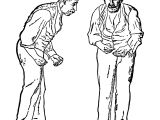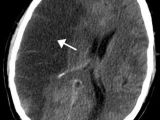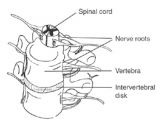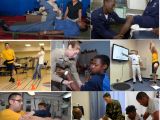Physiotherapy is a standard practice for people recovering from a long convalescence, surgery, muscle atrophy, or anything else that left the person unable to properly walk around. What we're about to show you is the latest robotic aid.
Scenes where people have to use their arms to hold themselves up on bars while slowly (and painfully) dragging their feet forward across an exercise strip are quite common in many films.
Since there aren't many stimulants or other technological means to “heal” muscle atrophy and gain pain tolerance, good old exercise is usually the only way to go when trying to regain mobility.
Strokes and other neurological conditions are different, however, because it's not an issue with muscles anymore, but with the brain.
Due to brain damage, or some other problems with the nervous system, the legs and rest of the body don't receive proper direction anymore.
Fortunately, it's not totally impossible to regain one's natural gait in such situations. Especially now that a team of researchers from the National University of Singapore’s (NUS) Faculty of Engineering have created a new robot walking assistant.
The new robot walker will teach patients how to walk again
Perhaps “teach” is not the best term to use here. The robot is more of a support device, intended to carry out therapy sessions, or rather improve their effectiveness.
Stroke, spinal cord injuries, traumatic brain injuries and Parkinson's disease leave behind mobility issues for all affected people.
The NUC Faculty of Engineering team invented a new robotic walker that can support a patient's weight while they do their best to regain control of their limbs.
The walker provides just the right amount of force at the pelvis of the patient to help them walk with a natural gait. This essentially allows them to practice their walking even though they would normally not have the strength and coordination to stand upright, much less keep track of the continuously averted faceplants that walking consists of.
All the while, the walker gathers quantitative data for doctors and physiotherapists to monitor the progress of the patient’s rehabilitation and plan further stages.
What the walker is made of
There are six modules: an active body weight support unit, a pelvic and trunk motion support unit, a suite of body sensors, a functional electrical stimulation unit, an intuitive control interface, and of course, an omni-directional mobile platform.
It is complex enough that patients can go through different training schemes as needed, some difficult to achieve manually. For instance, the walker could simply support the weight, or it could use the electrical unit to deliver targeted electrical shocks to certain muscles, helping a joint move as it should.
“This robotic walker allows patients to practice their gait movements continuously to optimise their therapy. When patients repeat the movements in a natural setting, the routine can be imprinted into their brains which gradually learn to correct from the damage resulting from their medical conditions,” explained Assistant Professor Yu Haoyong.
Commercialization should begin soon enough, but we have no ETAs to impart, although the inventors are quite optimistic.
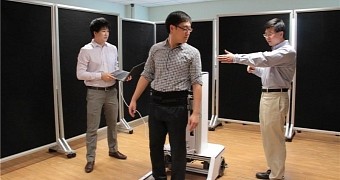
 14 DAY TRIAL //
14 DAY TRIAL // 
